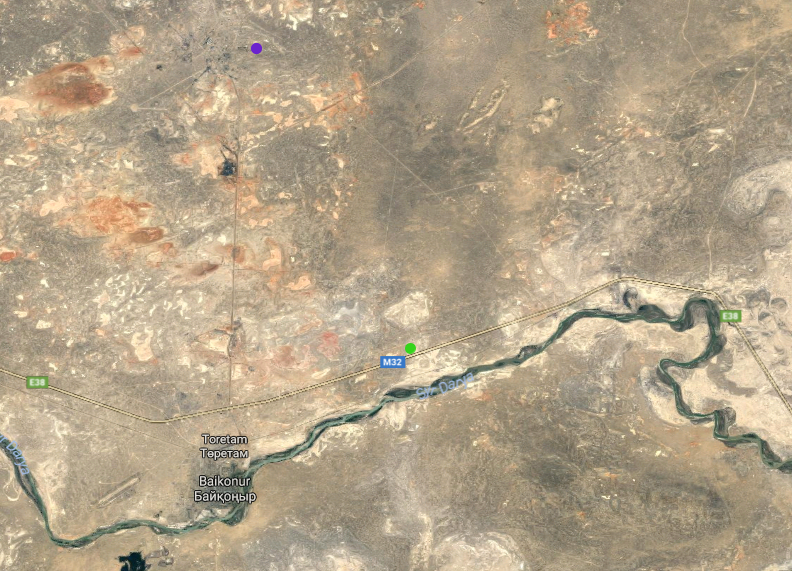La M41, aussi connue sous le nom de l’autoroute du Pamir, traverse un partie de l’Asie Centrale en se rendant de Och au Kirghizistan jusqu’à Douchanbé au Tajikistan. En tant que deuxième route continue la plus élevée au monde, elle abonde en paysages spectaculaires et s’est méritée une place sur le podium des destinations immanquables pour motocyclistes d’aventures, routards en 4×4 et cyclistes. Cependant, peut-elle être traversée avec n’importe quel véhicule?
La majeure partie des gens qui traversent le Pamir loueront un 4×4 avec d’autres voyageurs ou le feront depuis l’Europe avec leur propre véhicule, généralement aussi un 4×4 ou un camion utilitaire modifié en campeur. Toutefois, est-ce possible d’affronter cette route en voiture normale? Les gros tout-terrains gourmands en essence et chers à l’achat ne sont pas à la portée de tous. Avant mon départ, je n’avais pas été en mesure de trouver de l’information sur internet confirmant la possibilité et la sécurité de traverser le Pamir. L’ayant moi-même parcouru dans une Volkswagen Golf 1999 début octobre avec seulement du matériel de camping de base, je me suis dit que je pourrais faire profiter de futurs voyageurs de mon expérience et leur donner la confiance que même en voiture, le Pamir est à leur portée.
Routes
Depuis Och vers Khorog, la route est plutôt bonne considérant les endroits par où elle passe. Il y aura certainement nombres de nids-de-poules, de la tôle ondulée et autres obstacles, mais certaines parties sont en très bonne condition, ce qui est plutôt surprenant. La route de la vallée du Wakhan est très endommagée, mais définitivement traversable en voiture. Le tronçon allant de Khorog à Kalaikum est lui dans un état désastreux, mais aussi circulable (c’est le lien principal qui relie la région au reste du Tadjikistan). Bref, dans tous les cas, si la route devient difficile, ajustez votre vitesse et vous passerez.
Selon moi, les obstacles les plus sérieux sont les passages à gué, mais cela est très dépendant de la saison et de l’état des ponts. En ce qui me concernait, j’y étais début octobre et je n’en ai croisé aucun. Dès votre arrivée en Asie Centrale, vous allez rencontrer nombre de voyageurs revenant du Pamir, donc l’idéal est de commencer à s’informer dès lors. La règle générale pour les passages à gué est de s’assurer que le niveau de l’eau (que vous devriez vérifier avant de vous engager bien sûr) est inférieur à la prise d’air du moteur. Pour la plupart des voitures, on parle approximativement de la hauteur des phares. Regardez aussi ce que les locaux font. Souvent, il existe des passages moins profonds en amont ou en aval.

Essence
Il y a des stations services à Murghab, Khorog et Kalaikum. Dans les plus petits villages, demandez aux gens, ils vous vendront certainement une partie de leur réserves. Avec un réservoir plein, aller d’une ville majeure à l’autre se fait sans problème. Cependant, vous devriez vous ravitailler lorsque vous en avez la possibilité, spécialement dans le Wakhan. Soyez conscient que la qualité de l’essence peut être inférieure à ce qui se retrouve normalement dans la région donc faites attention, spécialement si vous conduisez un véhicule diesel.

Réparation
Une panne mécanique dans le Pamir est probablement la pire chose pouvant vous arriver. Vraisemblablement, vous allez devoir vous rendre au prochain village (en auto-stop), trouver quelqu’un en mesure de vous remorquer jusqu’à la ville voisine, attendre (très) longtemps que la pièce se rende jusqu’à vous puis l’installer sur le véhicule. En somme, une situation qui vous coûtera très cher en temps et en argent.
Bien que le visa tadjike est valide pour 45 jours, votre voiture ne peut rester sur le territoire que 15 jours (allez trouver la raison). Donc, par le temps où votre voiture sera de nouveau fonctionnelle, vous aurez probablement dépassé ce délai.
Préparation
En général, aucune modifications autres qu’une inspection et une mise à niveau ne seront requises sur votre voiture pour qu’elle soit en mesure de traverser le Pamir. Les moteurs modernes n’auront aucune difficulté à fonctionner en altitude, mais seront légèrement handicapés au niveau de leur puissance. Si vous désirez explorer des routes secondaires (comme la vallée du Wakhan), vous devez rehausser la garde au sol de votre véhicule en remplaçant les ressorts de suspension. En fait, étant donné l’état des routes en Asie Centrale, c’est quelque chose que vous devriez considérer dès votre arrivée dans la région. Les pièces et la main d’oeuvre y sont très bon marché. Pour notre Volkswagen Golf, deux amortisseurs, quatre ressorts et l’installation ne nous ont coûté que 100 Euros. Pour le même travail en France, il aurait fallu débourser facilement dix fois plus. Une plaque pour protéger le dessous du moteur est aussi une bonne idée, mais moins nécessaire si votre garde au sol est bonne.
Autrement, voici quelques autres conseils:
- Transportez un bidon d’essence.
- Deux roues de secours sont une excellent idée (nous les avons utilisées les deux, mais pas dans le Pamir…).
- Apportez un jeu d’outils de base. Même si vous ne savez pas comment vous en servir, les gens du coin le sauront (ils sont très serviables).
- Même si ce n’est pas obligatoire, un peu de connaissances en mécanique s’avérera très utile.
- Connaissez votre voiture et ses petits bruits; de cette manière, vous pourrez identifier des problèmes avant qu’ils ne deviennent des bris.
- Conduisez une marque de voiture qui est présente en Asie Centrale. En général, tout ce qui est allemand, japonais ou russe est très commun dans la région. Évitez les françaises et les italiennes, il n’en circule aucune. Ce conseil est très important, spécialement si vous comptez revendre votre véhicule par la suite.
- Roulez en voiture à essence. Comme les voitures diesel sont très rares en Asie Centrale, vous aurez énormément de difficulté à trouver des pièces pour réparer leur moteur.
Autres informations
- Le camping est très facile dans le Pamir, mais si dormir sous la tente n’est pas trop votre truc, il a des maisons d’hôte (environ 10$US) dans presque tous les villages.
- Il est difficile de trouver de la nourriture autre que des produits non périssables dans de petits marchés. Constituez-vous une réserve avant de quitter la civilization.
- Le Pamir est un endroit venteux et froid. Attentez vous à n’importe quel type de météo à n’importe quel moment de l’année.
- Ayez assez d’argent (préférablement des somonis tadjikes, mais les $US sont aussi acceptés) pour couvrir toute votre traversée. Les ATMs sont peu fiables et très petit nombre.
- Vous allez sentir l’altitude. Si vous conduisez depuis Och vers Douchanbé, donnez à votre corps le temps de s’acclimater car la montée est brusque. Dans la direction contraire, la montée est plus progressive alors l’acclimatation se fera au fil des journées.






